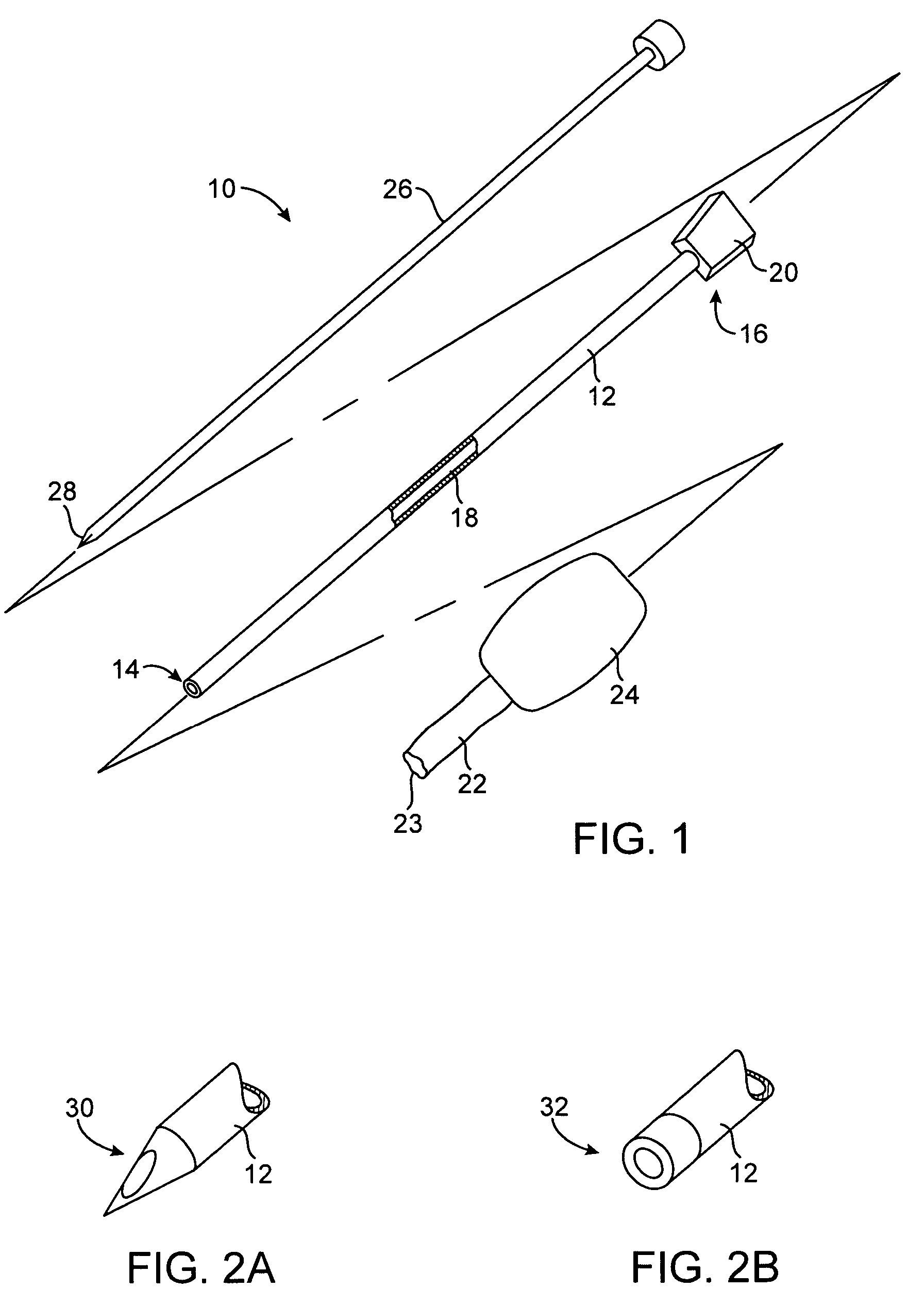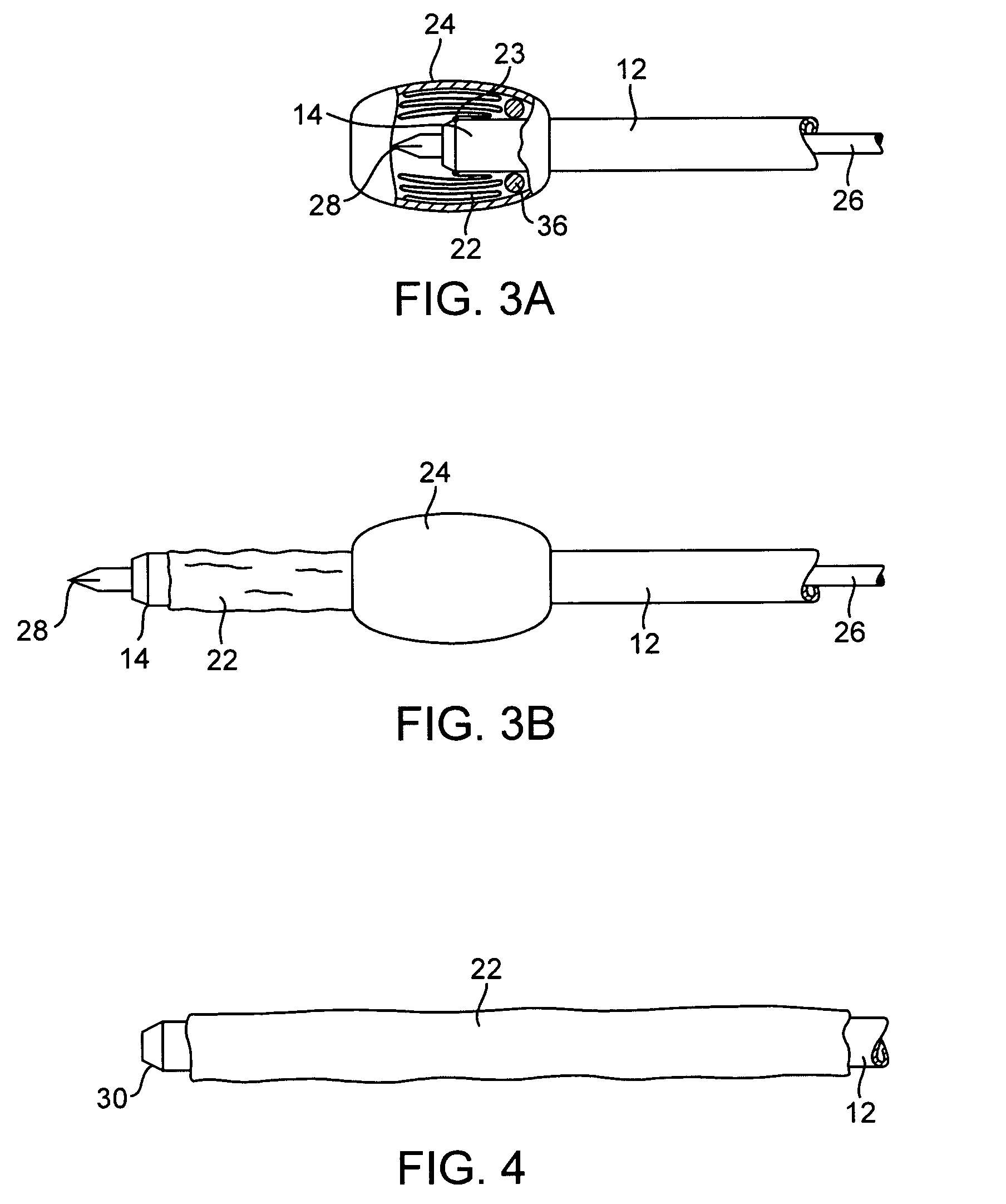Non-seeding biopsy device and method
a biopsy device and biopsy method technology, applied in the field of medical equipment and methods, to achieve the effect of reducing the risk of tumor cell seeding
- Summary
- Abstract
- Description
- Claims
- Application Information
AI Technical Summary
Benefits of technology
Problems solved by technology
Method used
Image
Examples
Embodiment Construction
[0029]An exemplary system 10 constructed in accordance with the principles of the present invention includes a cannula 12 having a distal end 14, a proximal end 16, a central passage 18 therethrough, and a hub 20 at the proximal end. This will be described in more detail below. The lumen 18 permits introduction of a separate tissue biopsy instrument (not shown) for obtaining a tissue sample when the cannula is positioned adjacent a target site within solid tissue. Usually, a separate stylet 26 (described below) will also be provided to facilitate introduction of the cannula into tissue.
[0030]The system 10 further comprises a protective sleeve 22 which is preferably stowed within a canister 24 or other protective enclosure. The protective sleeve 22 is preferably furled, as best shown in FIG. 3A, and a leading edge 23 of the sleeve is attachable at or near the distal end 14 of the cannula 12. Usually, the leading edge 23 will be attached at or near the distal end of the cannula 12 at ...
PUM
 Login to View More
Login to View More Abstract
Description
Claims
Application Information
 Login to View More
Login to View More - R&D
- Intellectual Property
- Life Sciences
- Materials
- Tech Scout
- Unparalleled Data Quality
- Higher Quality Content
- 60% Fewer Hallucinations
Browse by: Latest US Patents, China's latest patents, Technical Efficacy Thesaurus, Application Domain, Technology Topic, Popular Technical Reports.
© 2025 PatSnap. All rights reserved.Legal|Privacy policy|Modern Slavery Act Transparency Statement|Sitemap|About US| Contact US: help@patsnap.com



